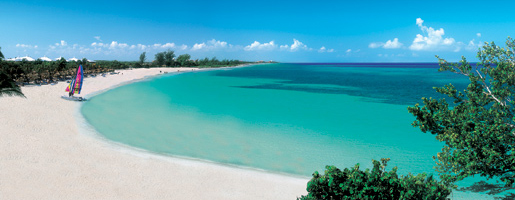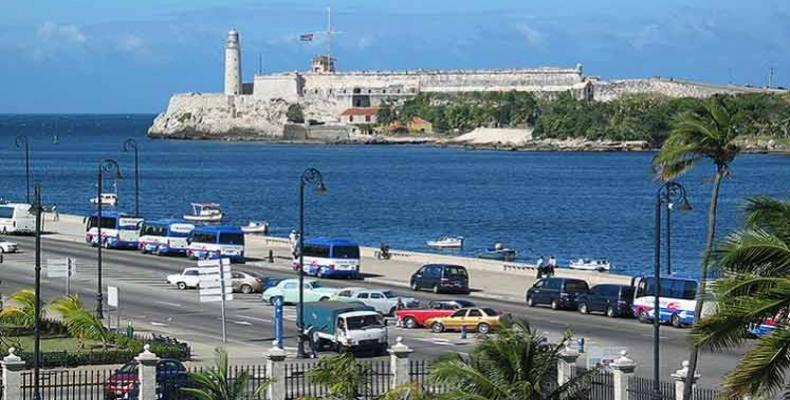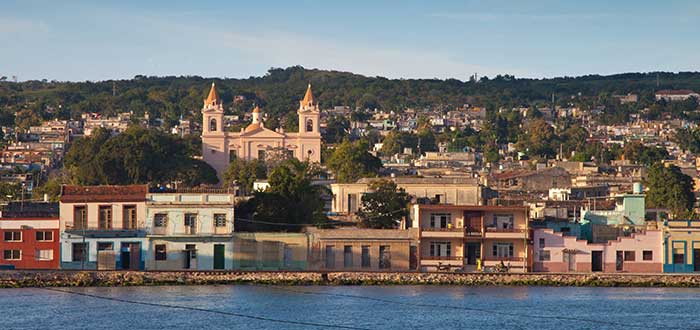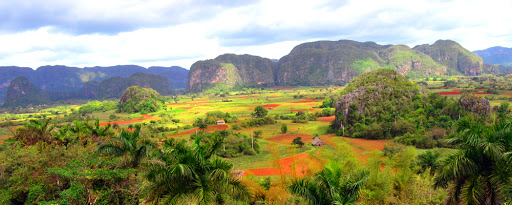 AYMEÉ NUVIOLA, CUBAN SINGER, COMPOSER AND ACTRESS. PHOTOS/VIDEOS.
AYMEÉ NUVIOLA, CUBAN SINGER, COMPOSER AND ACTRESS. PHOTOS/VIDEOS.
Aymée Regla Nuviola Suárez better known as Aymeé Nuviola was born in the neighborhood of San Leopoldo in Havana, Cuba on January 8, 1973. She is a singer, pianist, composer, and actress, nicknamed “La Sonera del Mundo”. She is also known for having played Celia Cruz in the Colombian telenovela, Celia.
She won a Grammy Award for Best Tropical Latin Album with A Journey Through Cuban Music in the 62nd Annual Grammy Awards in 2020. «Como anillo al dedo», Aymée Nuviola, winner of the Latin Grammy 2018 as the best tropical fusion album and nominated for Cubadisco 2018 in the category of dance music voices, in 2014 nominated for the Latin Grammy and Grammy G 2015 with the album «First Class to Havana» as best Salsa album and best Tropical album.
She has also collaborated on multiple Grammy-winning albums, the last of which was «No Quiero Llanto» del Septeto Santiaguero in 2016. She was nominated for the Billboards Awards in 2010, the result of her first production in the United States”Corazón Sonero”, by three consecutive years, 2014, 2015, 2016 was nominated for the Cubadisco (Cuba) contest, as the best singer-songwriter and a best popular music album with the productions «En la intimidad», «First Class to Havana» and «El regreso a La Habana» the latter produced by Sergio George.
https://youtu.be/-aPhDzJAp5E
(Press ^ Here)
Aymee sings Salsa “El Cuarto de Tula”.
In 2014, Aymée was selected among the 25 most influential figures in Miami by the newspaper New Times, at the end of 2016, she reached # 1 on the Billboard Tropical list with the theme «Bailando todo se olvida» and she is the first Afro-Latina in the history of Spotify, in representing with her image and her music the Black History Month, of the year 2017 (annual celebration in the United States) through the playlist with the name, “Viva Afro-Latino”.
Born into a family of musicians, she began playing piano at the age of 3 years, later she graduated from the Manuel Saumell Conservatory in Havana. As a child Aymée composed and sang along with the piano and inspired by the work of Benny Moré, Elena Burke, Omara Portuondo, José Antonio Méndez, and others. With these influences, she became the voice in several recordings of groups like “Irakere” and “NG La Banda”. Later, she and her sister Lourdes were the singers of the Cuban music group “Pachito Alonso y sus Kini Kinis”.
At 9 years of age, she began to sing professionally with her sister Lourdes, forming the duo “Las hermanas Nuviola”, a name with which both became known in their native Cuba, where they won the “Todo el Mundo canta” contest.
ARTISTIC CAREER
The music of Aymée is a fusion between genres such as Jazz, Timba, Son, Guaguancó, Guaracha, and Charanga, all of them decorated with urban electronic colors. Aymée also ventures into genres such as the Bolero, the Filin, Bossa nova, and the romantic song. However, it was with the salsa and the fierce Timba, (a genre in which is one of its founders.) As it became known internationally.
https://youtu.be/GwdYHwTPeSA
(Press ^ Here)
Aymee Sings “Rumba de la Buena”.
Aymée has participated in jazz festivals such as the North Sea Jazz Festival and Curaçao and has performed practically in the five continents, from her native island Cuba to Mexico, Chile, Colombia, Argentina, Uruguay, Panama, Brazil, Spain, Italy, France, the Netherlands, Hungary, and in several places in the United States, including the emblematic Madison Square Garden, The Dolby Theatre in Hollywood and the Adrienne Arsht Center for the Performing Arts in Miami among others.
In 2015, she was invited to participate in the most important audiovisual event in Puerto Rico, “The Banco Popular Christmas Special.” In 2016, she was given the key to the city of Miami and Mayor Tomas Regalado proclaimed February 10 as the day of Aymée Nuviola in the city of Miami, a distinction repeated by the mayor of the city of Houston, Sylvester Turner proclaiming October 14, 2016, as the day of Aymée Nuviola in that city.
PRIVATE LIFE
In 2010, Aymée met Paulo Simeón, a producer and director of Television and Radio, (he is currently her universal manager) with whom she had a one-year engagement before getting married.
In 1998, Aymée, although raised and educated as a Catholic, converted to Protestantism
PHILANTHROPY
Aymeé, has been cooperating for more than 12 years with the “League Against Cancer” in the city of Miami, also with the organization “Walk Now for Autism Speaks” and with several aid organizations in Colombia, Venezuela, and Puerto Rico, for the latter, was part of the collection and distribution of a private plane provided by Gregory Elias and Top Stop Music, with more than three tons of food for the victims of Hurricane Maria on the island, as well as he wrote and later recorded along with the singer Rey Ruiz, the song: “Pa’lante Puerto Rico”, which donated all the rights of authorship and distribution to raise funds for the victims of said hurricane.
(READ AIMEE NUVIOLA DISCOGRAPHY, AWARDS, AND NOMINATIONS IN THE SPANISH SECTION).
 AYMEE NUVIOLA, “LA SONERA DEL MUNDO”, CANTANTE, COMPOSITORA Y ACTRIZ CUBANA. VIDEOS.
AYMEE NUVIOLA, “LA SONERA DEL MUNDO”, CANTANTE, COMPOSITORA Y ACTRIZ CUBANA. VIDEOS.
Aymée Regla Nuviola Suárez mejor conocida como Aymee Nuviola nació en el barrio de San Leopoldo en La Habana, Cuba el 8 de enero de 1973. Es cantante, pianista, compositora y actriz, apodada “La Sonera del Mundo”. También es conocida por haber interpretado a Celia Cruz en la telenovela colombiana Celia.
Ganó un premio Grammy al Mejor Álbum Tropical Latino con A Journey Through Cuban Music en la 62a Entrega Anual de los Grammy en 2020. «Como anillo al dedo», Aymée Nuviola, ganadora del Latin Grammy 2018 como mejor álbum de fusión tropical y nominada a Cubadisco 2018 en la categoría de voces de música de baile, en 2014 nominado al Grammy Latino y al Grammy G 2015 con el disco «First Class to Havana» como mejor disco de Salsa y mejor disco Tropical.
https://youtu.be/m2FiTO3hwWo
(Presione ^ Azul)
Aymee Canta “Bailando todo se Olvida”
También ha colaborado en múltiples álbumes ganadores del Grammy, el último de los cuales fue «No Quiero Llanto» del Septeto Santiaguero en 2016. Fue nominada a los Premios Billboards en 2010, resultado de su primera producción en Estados Unidos “Corazón Sonero “, por tres años consecutivos, 2014, 2015, 2016 fue nominado al concurso Cubadisco (Cuba), como mejor cantautor y mejor disco de música popular con las producciones« En la intimidad »,« Primera clase a la Habana »y «El regreso a La Habana» este último producido por Sergio George.
En 2014, Aymée fue seleccionada entre las 25 figuras más influyentes de Miami por el diario New Times, a fines de 2016 alcanzó el # 1 en la lista Billboard Tropical con el tema «Bailando todo se olvida» y es la primera afro -Latina en la historia de Spotify, al representar con su imagen y su música el Mes de la Historia Negra, del año 2017 (celebración anual en Estados Unidos) a través del playlist con el nombre, “Viva Afro-Latino”.
Nacida en una familia de músicos, comenzó a tocar el piano a la edad de 3 años, luego se graduó del Conservatorio Manuel Saumell de La Habana. De niña Aymée componía y cantaba junto al piano e inspirada en la obra de Benny Moré, Elena Burke, Omara Portuondo, José Antonio Méndez, entre otros. Con estas influencias, se convirtió en la voz en varias grabaciones de grupos como “Irakere” y “NG La Banda”. Posteriormente, ella y su hermana Lourdes fueron las cantantes del grupo de música cubana “Pachito Alonso y sus Kini Kinis”.
https://youtu.be/6yN7U72ybsU
(Presione ^ Azul)
Aymee Canta “Ya No Creo en Ti”.
A los 9 años comienza a cantar profesionalmente con su hermana Lourdes, formando el dúo “Las hermanas Nuviola”, nombre con el que ambas se dieron a conocer en su Cuba natal, donde ganaron el concurso “Todo el Mundo canta”.
CARRERA ARTÍSTICA
La música de Aymée es una fusión de géneros como Jazz, Timba, Son, Guaguancó, Guaracha y Charanga, todos ellos decorados con colores electrónicos urbanos. Aymée también incursiona en géneros como el Bolero, el Filin, la Bossa nova y la canción romántica. Sin embargo, fue con la salsa y la feroz timba, (género en el que es uno de sus fundadores). Como se dio a conocer internacionalmente.
Aymée ha participado en festivales de jazz como el North Sea Jazz Festival y Curaçao y ha actuado prácticamente en los cinco continentes, desde su isla natal Cuba hasta México, Chile, Colombia, Argentina, Uruguay, Panamá, Brasil, España, Italia, Francia, Holanda, Hungría, y en varios lugares de Estados Unidos, incluyendo el emblemático Madison Square Garden, The Dolby Theatre en Hollywood y el Adrienne Arsht Center for the Performing Arts en Miami entre otros.
https://youtu.be/xu2wLeJ9zzo
(Presione ^ Azul)
Aymee Canta “Pa’ que la Gente se Entere”.
En 2015, fue invitada a participar en el evento audiovisual más importante de Puerto Rico, “El Especial de Navidad del Banco Popular”. En 2016, se le entregó la llave de la ciudad de Miami y el alcalde Tomas Regalado proclamó el 10 de febrero como el día de Aymée Nuviola en la ciudad de Miami, distinción que repitió el alcalde de la ciudad de Houston, Sylvester Turner proclamando el 14 de octubre, 2016, como el día de Aymée Nuviola en esa ciudad.
VIDA PRIVADA
En 2010, Aymée conoció a Paulo Simeón, productor y director de Televisión y Radio (actualmente es su manager universal) con quien tuvo un compromiso de un año antes de casarse.
En 1998, Aymée, aunque criado y educado como católico, se convirtió al protestantismo.
FILANTROPÍA
Aymée, coopera desde hace más de 12 años con la “Liga Contra el Cáncer” de la ciudad de Miami, también con la organización “Camina Ahora por Autism Speaks” y con varias organizaciones de ayuda en Colombia, Venezuela y Puerto Rico, para el Este último, fue parte de la recolección y distribución de un avión privado provisto por Gregory Elias y Top Stop Music, con más de tres toneladas de comida para las víctimas del huracán María en la isla, así como escribió y luego grabó junto con el El cantante Rey Ruiz, la canción: “Pa’lante Puerto Rico”, que donó todos los derechos de autoría y distribución para recaudar fondos para las víctimas de dicho huracán.
https://youtu.be/UG9X1atPlrk
(Presione ^ Azul)
Aymee Canta “Yo Soy el Punto Cubano”
DISCOGRAFÍA.
Últimos álbumes
Como Anillo al dedo (2017)
«Pa’ que la gente se entere»
«Soy yo quien te enseñó»
«Lo que tú me pidas»
«Rumba de la buena»
«Donde está el billete»
«Dame un like»
«Como anillo al dedo»
«Quedamos en paz»
«Quiero enamorarme»
«Bailando todo se olvida»
El Regreso a La Habana (2016)
ULTIMOS SINGLES.
2017: «Rumba de la buena»
2016: «Bailando todo se olvida» Feat. Baby Rasta & Gringo
2016: «La negra tiene tumbao» Feat. Kat Dahlia
2014: «El espacio»
https://youtu.be/GomTAnNc__g
(Presione ^ Azul)
Aymee Canta “Quedate”
FILMOGRAFIA
2015-2016 Celia Úrsula Hilaria Celia Caridad Cruz Alfonso / Celia Cruz Adulta
El Regreso a La Habana Gegory Elías/ Paulo Simeón Cuba Paulo Simeón
Rumba de la buena Paola Fallas Miami Paola Fallas
Bailando todo se olvida Julio E. Pérez/Paulo Simeón Cuba Paulo Simeón
La negra tiene tumbao Paolo Croce Miami Paolo Croce
El espacio Sebastian Sorin Argentina Sebastián Sorin
Te quiero un montón Julio E. Pérez Miami Paulo Simeón
Sin ver el final Edwin Gonzáles /Paulo Simeón Miami Paulo Simeón
Me equivoqué Justo Piñero Miami Paulo Simeón
Quédate Justo Piñero Miami Paulo Simeón
Gracias por el consuelo Justo Piñero Miami Paulo Simeón
Fiesta Justo Piñero Miami Paulo Simeón
Ya no creo en ti Justo Piñero Miami Paulo Simeón
https://youtu.be/zIQzlPeCRyw
(Presione ^ Azul)
Aymee Canta junto a Gonzalo Rubalcaba.
PREMIOS Y NOMINACIONES
2010 Billboard Latino Corazón sonero Artista tropical airplay del año, femenino Nominated
2014 Latin Grammy First class to Havana Mejor álbum de salsa Nominated
2014 Cubadisco En la intimidad Mejor cantautora Nominated
2015 Grammy Award First class to Havana Best Tropical Latin Album Nominated
2015 Cubadisco First class to Havana Mejor álbum de música tropical Nominated
2016 Cubadisco El Regreso a La Habana Mejor álbum de música tropical Nominated
2018 Latin Grammy Como anillo al dedo Mejor álbum fusión tropical Winner
2018 Cubadisco Como anillo al dedo Voces de música bailable Nominated
2020 Grammy Award A Journey Through Cuban Music Best Tropical Latin Album Winner
Agencies/ Wiki/ Various/ Extractos/ Excertps/ Internet Photos/ YouTube/ Arnoldo Varona/ www.TheCubanHistory.com
THE CUBAN HISTORY, HOLLYWOOD.



































